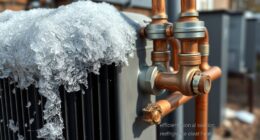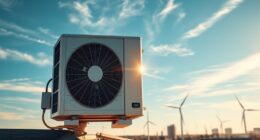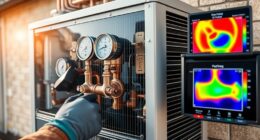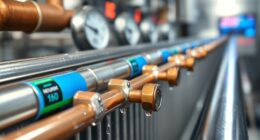Are you looking to save on your energy bills while still keeping your home comfortable? We’ve got you covered! In this article, we’ll show you how to optimize your heat pump performance for remarkable energy savings.
From understanding efficiency ratings to choosing the right size heat pump, maintaining and cleaning for optimal performance, adjusting settings, and utilizing smart thermostats, we’ll equip you with the knowledge to make your heat pump work smarter, not harder.
Let’s get started!
Key Takeaways
- Understanding heat pump efficiency ratings, such as COP and SEER, can help homeowners make informed decisions about purchasing a heat pump.
- Choosing the right size heat pump for your home is crucial and requires considering factors such as square footage, climate, and insulation levels.
- Regular maintenance and cleaning tasks, such as replacing air filters and cleaning coils, are essential for optimal heat pump performance and energy savings.
- Adjusting heat pump settings, utilizing programmable thermostats, and utilizing smart thermostats can greatly enhance energy savings and optimize heat pump efficiency.
Understanding Heat Pump Efficiency Ratings
Let’s dive into how to understand heat pump efficiency ratings for optimal energy savings.

Heat pump technology advancements have greatly improved the efficiency of these systems in recent years. Factors affecting heat pump efficiency include the type of refrigerant used, the size and design of the heat exchanger, and the overall system design.
Efficiency ratings are typically expressed as a coefficient of performance (COP) or a seasonal energy efficiency ratio (SEER). COP measures the ratio of heating or cooling output to the amount of electricity consumed, while SEER represents the cooling output over a typical cooling season divided by the total electrical energy input.
By understanding these ratings, homeowners can make informed decisions about their heat pump purchase, ensuring they choose a system that’s both efficient and properly sized for their home.
Transitioning into the subsequent section, let’s now explore the importance of choosing the right size heat pump for your home.
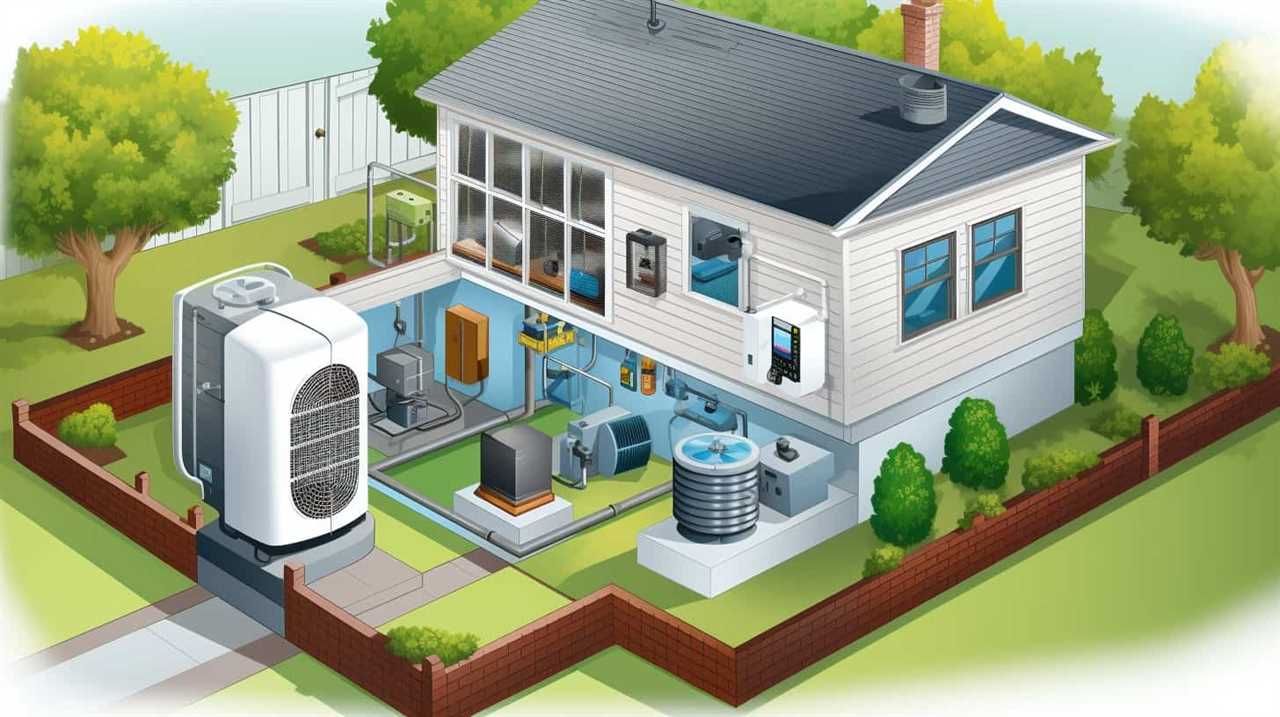
Choosing the Right Size Heat Pump for Your Home
We need to consider the appropriate size of a heat pump for our home to ensure optimal performance and energy savings. When choosing the right size heat pump, there are a few important sizing considerations to keep in mind:
-
Square footage: The size of your home will play a significant role in determining the capacity of the heat pump required. A professional can perform a load calculation to determine the exact size needed.
-
Climate: The climate in your region will also impact the sizing of the heat pump. Areas with extreme temperatures may require a larger capacity heat pump to ensure efficient heating and cooling.
-
Insulation: The level of insulation in your home will affect the heat loss or gain. A well-insulated home may require a smaller capacity heat pump.

-
Professional installation: It’s crucial to have a professional install the heat pump to ensure it’s properly sized and installed for optimal performance and energy savings.
Maintaining and Cleaning Your Heat Pump for Optimal Performance
To maintain optimal performance of our heat pump and ensure remarkable energy savings, it’s important to regularly clean and maintain the system.
Heat pump maintenance involves a few key tasks that can be easily performed by homeowners. First, it’s essential to regularly clean or replace the air filters. Clogged filters can restrict airflow and reduce the efficiency of the heat pump.
Additionally, it’s crucial to inspect the outdoor unit for any debris, such as leaves or branches, and remove them to prevent airflow obstruction.

Furthermore, cleaning the coils and fins of the heat pump is vital to maintain efficient heat transfer. This can be done using a soft brush or vacuum cleaner.
Adjusting Heat Pump Settings for Energy Savings
To maximize energy savings, adjust the heat pump settings based on the desired temperature and time of day. Here are some tips to help you optimize your heat pump settings for remarkable energy savings:
- Set the temperature slightly lower during the winter and slightly higher during the summer to reduce energy consumption.
- Use the programmable thermostat to schedule temperature adjustments based on your daily routine.
- Take advantage of the ‘Economy’ or ‘Energy Saving’ mode to further reduce energy usage when you’re away from home.
- Regularly check and clean the air filters to ensure proper airflow and prevent the heat pump from working harder than necessary.
Utilizing Smart Thermostats to Enhance Heat Pump Efficiency
Smart thermostats can significantly improve heat pump efficiency by allowing us to easily control and optimize temperature settings. These advanced thermostats offer features such as remote access and energy monitoring, which further enhance their effectiveness.
With remote access, we can adjust the temperature settings of our heat pump from anywhere using our smartphones or tablets. This means that if we forget to adjust the temperature before leaving the house, we can do so remotely to avoid unnecessary energy consumption.
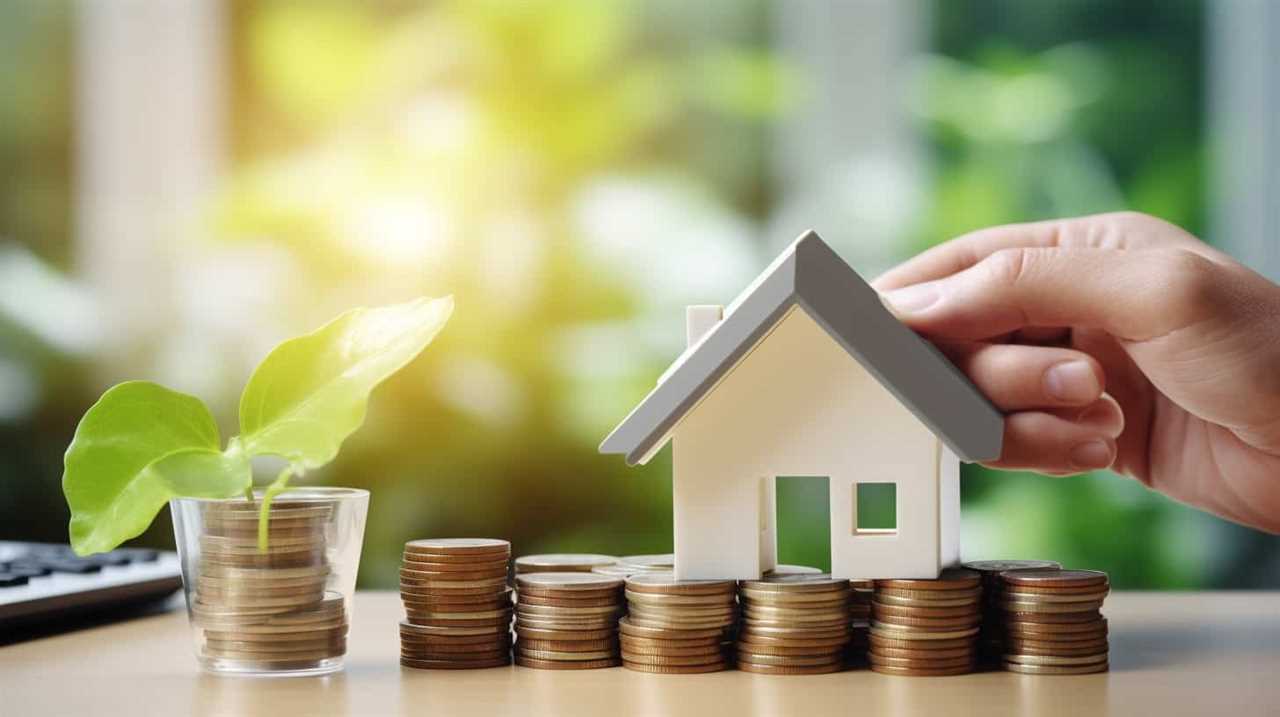
Additionally, smart thermostats provide energy monitoring capabilities, allowing us to track and analyze our energy usage patterns. By having this information readily available, we can make informed decisions on how to optimize our heat pump settings and reduce our energy consumption, leading to remarkable energy savings.
Frequently Asked Questions
How Much Money Can I Expect to Save on My Energy Bills by Optimizing My Heat Pump’s Performance?
By optimizing our heat pump’s performance, we can save a significant amount of money on our energy bills. Energy-saving tips and cost-effective strategies can help us achieve remarkable savings and reduce our overall energy consumption.
Are There Any Specific Maintenance Tasks That I Should Perform Regularly to Ensure My Heat Pump Operates at Peak Efficiency?
Regular maintenance tasks are crucial for peak efficiency. We should perform tasks such as cleaning or replacing air filters, inspecting and cleaning coils, and checking refrigerant levels. Professional maintenance services are also important for optimal performance.
Can I Adjust the Settings on My Heat Pump to Optimize Performance for Different Seasons or Weather Conditions?
Yes, we can adjust the settings on our heat pump to optimize performance for different seasons or weather conditions. It’s amazing how small adjustments can make a big difference in energy savings.

How Do Smart Thermostats Work to Enhance the Efficiency of Heat Pumps?
Smart thermostats enhance heat pump efficiency by using advanced features like learning algorithms, occupancy detection, and remote control. These features optimize settings based on weather conditions and user preferences, resulting in remarkable energy savings and increased comfort.
Are There Any Additional Tips or Tricks for Maximizing Energy Savings With a Heat Pump That Are Not Covered in This Article?
Well, folks, when it comes to maximizing energy savings with a heat pump, we’ve got you covered. From additional features to technological advancements, we’ve got all the tips and tricks you need.
Conclusion
In conclusion, optimizing heat pump performance is essential for remarkable energy savings.
By understanding efficiency ratings, choosing the right size heat pump, maintaining and cleaning regularly, adjusting settings, and utilizing smart thermostats, homeowners can maximize the efficiency of their heat pump systems.
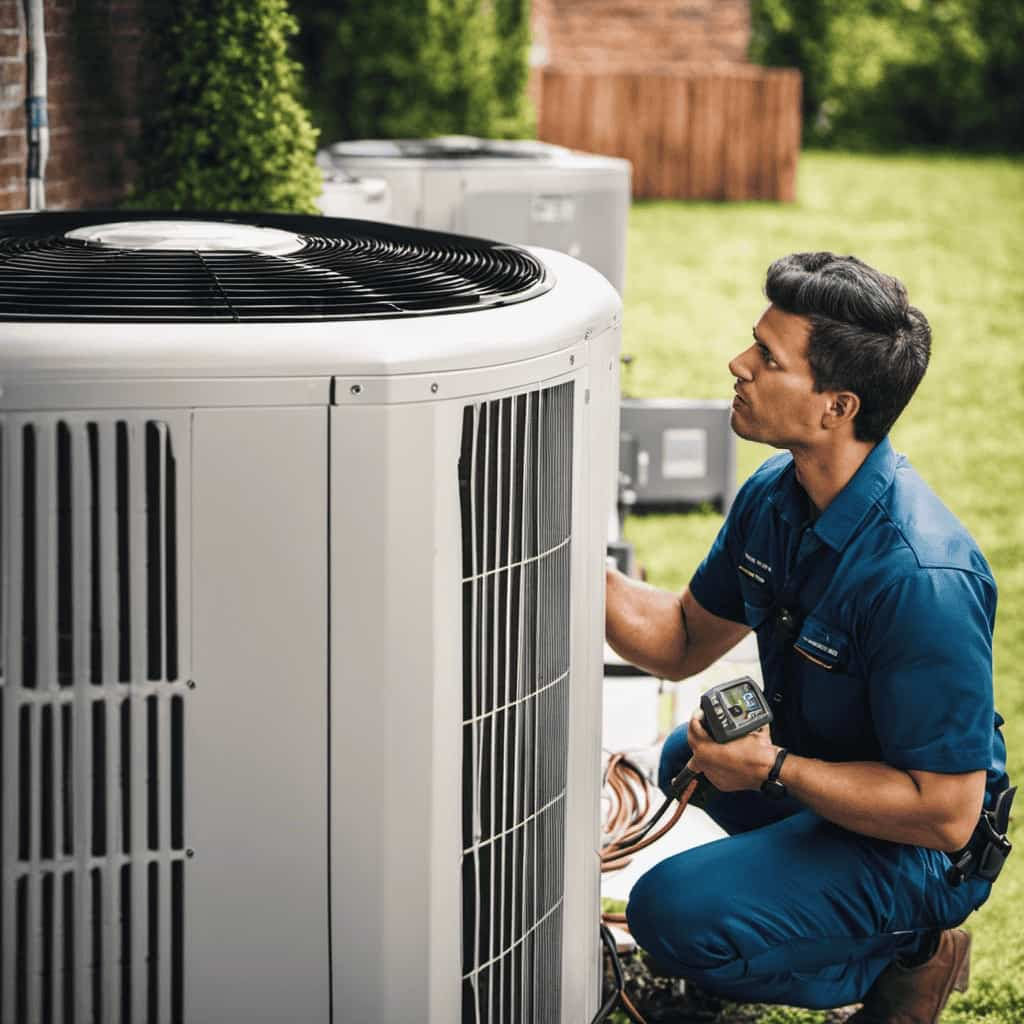
Remember, ‘A stitch in time saves nine’ – taking proactive measures to optimize heat pump performance now can lead to significant energy savings in the long run.






